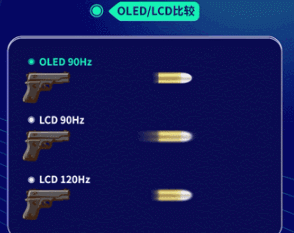
The screen refresh rate means the number of times the electron beam scans the screen image repeatedly, that is, the number of times the screen is refreshed per second; the higher the screen refresh rate, the better the stability of the displayed image. , the calculation unit of screen refresh rate is "Hz". When using a refresh frequency above 70Hz, flickering can be basically eliminated.

#The operating environment of this tutorial: IOS15 system, iphone13 pro mobile phone.
The refresh rate refers to the number of times the electron beam repeatedly scans the image on the screen. Simply put, the refresh rate is the number of times the screen is refreshed per second. The higher the refresh rate, the better the stability of the displayed image (picture). The refresh rate will directly determine its price, but since the refresh rate and resolution are mutually restrictive, only a monitor with a high refresh rate at high resolution can be called excellent performance.
Note that although its calculation unit and vertical scanning frequency are both Hz, these are two completely different concepts. The 75Hz screen refresh rate is the most basic standard set by VESA for flicker-free. The 75Hz here should be a standard that can be achieved in all display modes. For traditional monitors, the lower the refresh frequency, the more severe the image flicker and jitter, and the faster the eyes will tire. Sometimes it can cause sore eyes, dizziness and other symptoms. Because 60Hz is close to the refresh frequency of fluorescent lamps, an uncomfortable stroboscopic effect will occur when the display is at a refresh rate of 60Hz. When using a refresh frequency above 70Hz, flickering can be basically eliminated. Therefore, a refresh rate of 70Hz is the minimum requirement for stable operation of the monitor. Among mobile phone screen refresh rates, the OLED screen refresh rate has a better experience than the LCD screen refresh rate, is smoother, and saves power. LCD high refresh rates will have a smearing effect, which affects the experience. You can understand it this way, the refresh rate is the number of times the screen is refreshed per second. When watching a movie, what we see is actually a still picture, just like a slide show. Why do we feel the picture It is moving because human eyes have a visual retention effect. The impression left in the brain of the previous picture has not disappeared, and the next picture follows immediately, and the difference between the two pictures is very small. The action needs to be displayed with many sub-pictures, so that we feel that the picture is moving. The replacement of each picture is refreshing. Assuming that an action is completed by 20 pictures, we will look a bit like a cartoon, and If this action is increased to 30 pictures, it will look much more natural. This is the refresh rate. Extended knowledge: The impact of refresh rate
Extended knowledge: The impact of refresh rate
Hardware
FAQ
column!The above is the detailed content of What does screen refresh rate mean?. For more information, please follow other related articles on the PHP Chinese website!